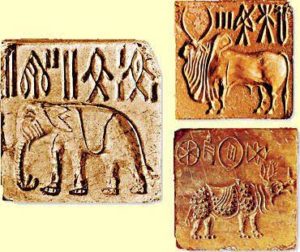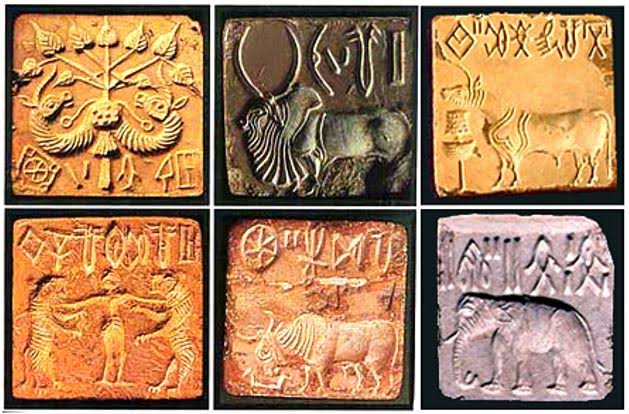HARPREET SINGH
Since the early 1920s, more than 1,500 Indus Valley Civilization sites have been excavated in the Indian subcontinent. Earlier and even more recent excavations found artefacts in present day Oman – finds made by Italian-American teams in 2016-18. Similar seals and found artifacts have revealed significant interactions and long distance trade, between Indus Civilization and the Oman peninsula region.
Examples of a ‘script’ that has been found on clay and stone seals, on pottery and also copper, has been a topic for its decipherment since its discovery.
For a language script to be called a script, it is necessary its signs have a phonetic value attributed to them, as an alphabet does. As understood so far, the evolution of language scripts is believed to have evolved from early pictograms, heiroglyphs, cuneiforms and finally the Linear B ancient scripts, such as the ancient Mycenaean Greek. The Mycenaean script is considered as the earliest and attested form of Greek. The oldest Mycenaean writing dates to 1450 BCE predating the Greek alphabet by several centuries.
 The oldest known written script of ancient India is acknowledged as the Brahmi script and its best known examples are the inscriptions found on rock cut Ashokan edicts, dating to roughly 250 BCE. Although the origin of this script is still much debated, it is believed, numerous present day South and Southeast Asian languages have evolved from it. It had its own numerals, which have evolved to the Hindu-Arabic numeral system, and now currently in use globally. One of the earliest attempts at decipherment of Harappan inscriptions was undertaken by Stephen Langdon in 1931 by comparing the signs with Brahmi.
The oldest known written script of ancient India is acknowledged as the Brahmi script and its best known examples are the inscriptions found on rock cut Ashokan edicts, dating to roughly 250 BCE. Although the origin of this script is still much debated, it is believed, numerous present day South and Southeast Asian languages have evolved from it. It had its own numerals, which have evolved to the Hindu-Arabic numeral system, and now currently in use globally. One of the earliest attempts at decipherment of Harappan inscriptions was undertaken by Stephen Langdon in 1931 by comparing the signs with Brahmi.
Speaking on the Harappan script, in New Delhi recently, Dr V.N. Prabhakar, Director, Institute of Archaeology of ASI, presented the key characteristics of the script as given in the following paragraph.
Typically, the characteristics of the Harappan seals (approximately 2500BCE), display a unicorn, as a four legged buffalo-like animal along with pictogram like inscriptions. Secondly, 400 to 450 unique signs have been classified so far, which could be called logographic or, perhaps logosyllabic. Most of these inscriptions have been deciphered to be read right to left, many of the later Harappan period read top to bottom, while only a small percentage are in left to right directions. Since 1965, computers have also been put to use to help with its decipherment. Yet, till date, there has been no success with any phonetic values attributed to them and no decipherment as well.
The decipherment of the Harappan script continues to be and remains a challenge for linguists, historians and archeologists, worldwide, waiting to be discovered.







